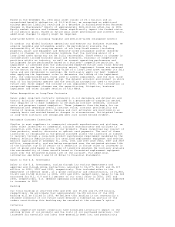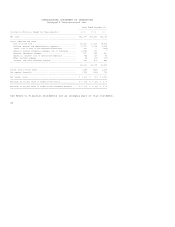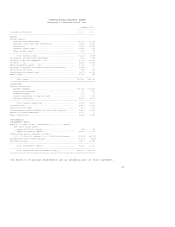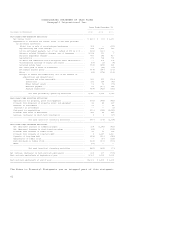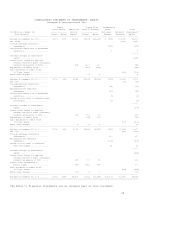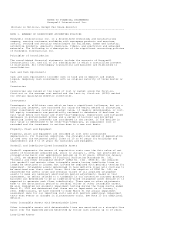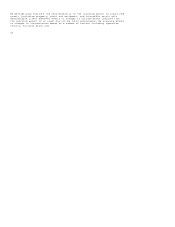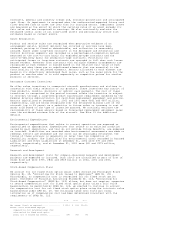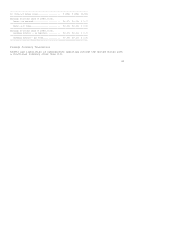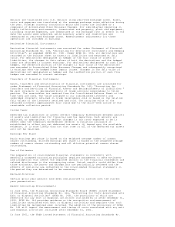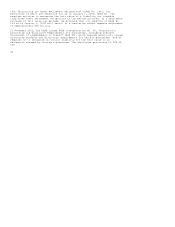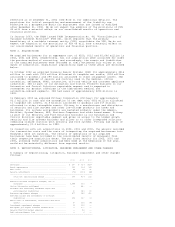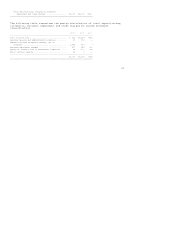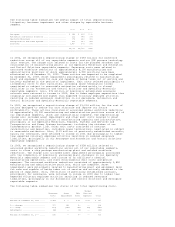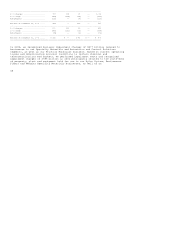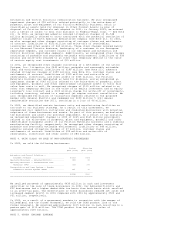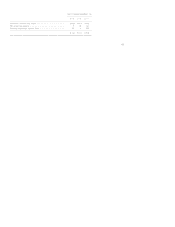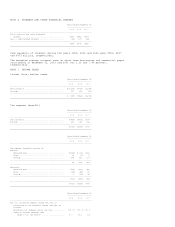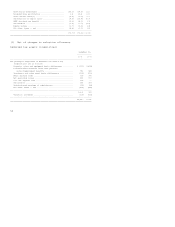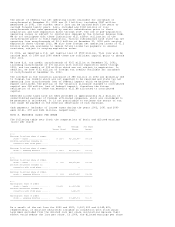Honeywell 2002 Annual Report Download - page 240
Download and view the complete annual report
Please find page 240 of the 2002 Honeywell annual report below. You can navigate through the pages in the report by either clicking on the pages listed below, or by using the keyword search tool below to find specific information within the annual report.dollars are translated into U.S. dollars using year-end exchange rates. Sales,
costs and expenses are translated at the average exchange rates effective during
the year. Foreign currency translation gains and losses are included as a
component of Accumulated Other Nonowner Changes. For subsidiaries operating in
highly inflationary environments, inventories and property, plant and equipment,
including related expenses, are remeasured at the exchange rate in effect on the
date the assets were acquired, while monetary assets and liabilities are
remeasured at year-end exchange rates. Remeasurement adjustments for these
operations are included in earnings.
Derivative Financial Instruments
Derivative financial instruments are accounted for under Statement of Financial
Accounting Standards No. 133, "Accounting for Derivative Instruments and Hedging
Activities", as amended (SFAS No. 133). Under SFAS No. 133, all derivatives are
recorded on the balance sheet as assets or liabilities and measured at fair
value. For derivatives designated as hedges of the fair value of assets or
liabilities, the changes in fair values of both the derivatives and the hedged
items are recorded in current earnings. For derivatives designated as cash flow
hedges, the effective portion of the changes in fair value of the derivatives
are recorded in Accumulated Other Nonowner Changes and subsequently recognized
in earnings when the hedged items impact income. Changes in the fair value of
derivatives not designated as hedges and the ineffective portion of cash flow
hedges are recorded in current earnings.
Transfers of Financial Instruments
Sales, transfers and securitization of financial instruments are accounted for
under Statement of Financial Accounting Standards No. 140, "Accounting for
Transfers and Servicing of Financial Assets and Extinguishments of Liabilities."
We sell interests in designated pools of trade accounts receivables to third
parties. The receivables are removed from the Consolidated Balance Sheet at the
time they are sold. The value assigned to our subordinated interests and
undivided interests retained in trade receivables sold is based on the relative
fair values of the interests retained and sold. The carrying value of the
retained interests approximates fair value due to the short-term nature of the
receivable collection period.
Income Taxes
Deferred tax liabilities or assets reflect temporary differences between amounts
of assets and liabilities for financial and tax reporting. Such amounts are
adjusted, as appropriate, to reflect changes in tax rates expected to be in
effect when the temporary differences reverse. A valuation allowance is
established to offset any net deferred tax assets if, based upon the available
evidence, it is more likely than not that some or all of the deferred tax assets
will not be realized.
Earnings Per Share
Basic earnings per share is based on the weighted average number of common
shares outstanding. Diluted earnings per share is based on the weighted average
number of common shares outstanding and all dilutive potential common shares
outstanding.
Use of Estimates
The preparation of consolidated financial statements in conformity with
generally accepted accounting principles requires management to make estimates
and assumptions that affect the reported amounts in the financial statements and
related disclosures in the accompanying notes. Actual results could differ from
those estimates. Estimates and assumptions are periodically reviewed and the
effects of revisions are reflected in the consolidated financial statements in
the period they are determined to be necessary.
Reclassifications
Certain prior year amounts have been reclassified to conform with the current
year presentation.
Recent Accounting Pronouncements
In June 2002, the Financial Accounting Standards Board (FASB) issued Statement
of Financial Accounting Standards No. 146, "Accounting for Costs Associated with
Exit or Disposal Activities" (SFAS No. 146), the provisions of which are
effective for any exit or disposal activities initiated by us after December 31,
2002. SFAS No. 146 provides guidance on the recognition and measurement of
liabilities associated with exit or disposal activities and requires that such
liabilities be recognized when incurred. The adoption of the provisions of SFAS
No. 146 will impact the measurement and timing of costs associated with any exit
and disposal activities initiated after December 31, 2002.
In June 2001, the FASB issued Statement of Financial Accounting Standards No.


